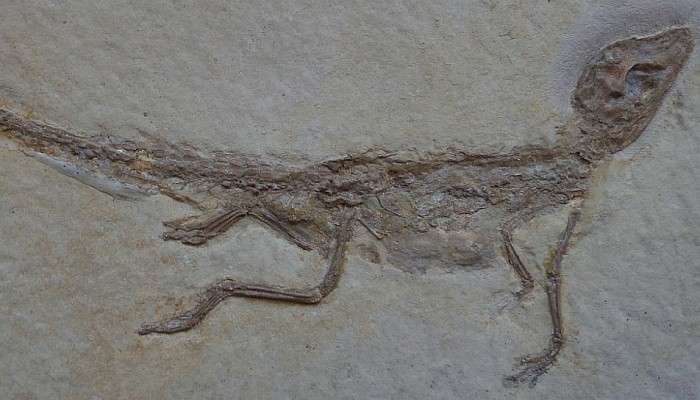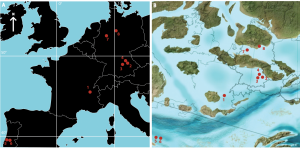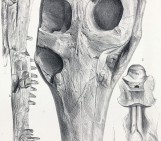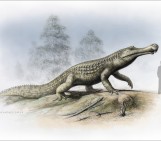
Europe 150 million years ago must have been a brilliant place to go on holiday. Tropical islands, warm lagoons to bathe, a warm climate, and nine metre long crocodiles noshing on anything that couldn’t swim fast enough. Ok, so maybe not that great for humans, but if you were an ancient archosaur, living alongside dinosaurs and other now extinct animals, life must have been pretty sweet.
These giant crocodiles were known as metriorhynchids, and were fully adapted to swim in the seas. Living alongside them, though, were smaller but by no means less impressive crocodiles known as atoposaurids. These are the cute little, but unfortunately extinct, guys I’ve been studying as part of my PhD for the last couple of years, and they are some of the best preserved fossil crocodiles we’ve got.
Recently, I was fortunate enough to have the first paper from my PhD published in PeerJ (more on the journal experience in another post), and it was on atoposaurids in Europe! By studying fossils first hand, and doing some work on their taxonomy – the description and naming of new species – we were unable to uncover a quite nice little story about these Jurassic micro-crocs.
Europe at the time formed what we call an island archipelago – small, isolated islands separated by shallow seas. Much like the modern Caribbean, but on a bigger scale. Germany amd France were both largely covered by warm, salty lagoons, and it is in the rocks that preserve these environments that we find atoposaurids. You might have heard of spectacular fossil localities such as Solnhofen before, for producing spectacular fossils including the infamous Archaeopteryx. The little atoposaurids are found alongside them, presumably washed out to sea in a storm where they found their final resting places.
What we see in the fossils is evidence for three different genera, with a species of each in the French and German basins, forming three sort of geographic ‘couplets’. These are Atoposaurus, the first to be named back in 1851, Alligatorellus, the genus for which we named a new species (by ‘upgrading’ a previously proposed subspecies denomination), and Alligatorium, some of the specimens of which were unfortunately lost during the Second World War.
What we think this distribution of species is signalling is something known as allopatric speciation. This is where different groups of animals diverge from a single underlying population, often driven by a factor such as geographic isolation, and over time evolve to form new species populations . This fits nicely with the idea that we have these atoposaurid groups living on different islands separated by impassable seas, which acted as a barrier to gene flow. Changes in sea-level at this time might have driven these patterns, but it’s extremely difficult to make this direct association.

All known atoposaurid localities in the Late Jurassic of Europe, based on modern and Jurassic geography. See the paper for locality details!
What it also shows is that atoposaurids might have been small, but during the late part of the Jurassic, were extremely successful and managed to live alongside their monstrous metriorhynchids cousins. They probably inhabited the land, venturing out to sea to hunt small fish, or perhaps just for leisure after taking in some sun on the beach (and maybe a mojito). This is what we call niche differentiation, the adoption of different modes of life to reduce competition between different animals, and probably explains how we could have had so many different types of crocodile in such a small area at the same time.
So that was my first paper! Just a small part of one thesis chapter, but feeds into some much cooler stuff that we’ll hopefully be publishing shortly. It’s just another example of how awesome crocodiles used to be in the past, gaining such an incredible diversity of forms from agile marine predators to ones that you’d definitely want to keep as a pet.
Adorable Alligatorellus, by Brian Switek
Tennant, J. P. And Mannion, P. D. (2014) Revision of the Late Jurassic corocodyliform Alligatorellus, and evidence for allopatric speciation driving high diversity in Western European atoposaurids, PeerJ, 599, link (part of top Palaeontology papers collection)




Pingback: Morsels For The Mind – 02/01/2015 › Six Incredible Things Before Breakfast
William W. Little
Interesting. Thanks for posting.